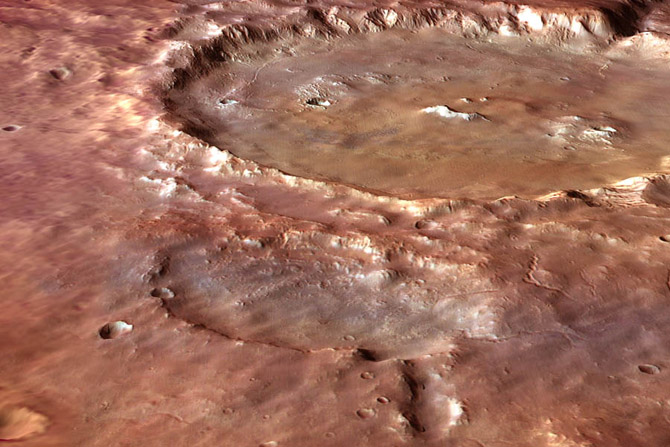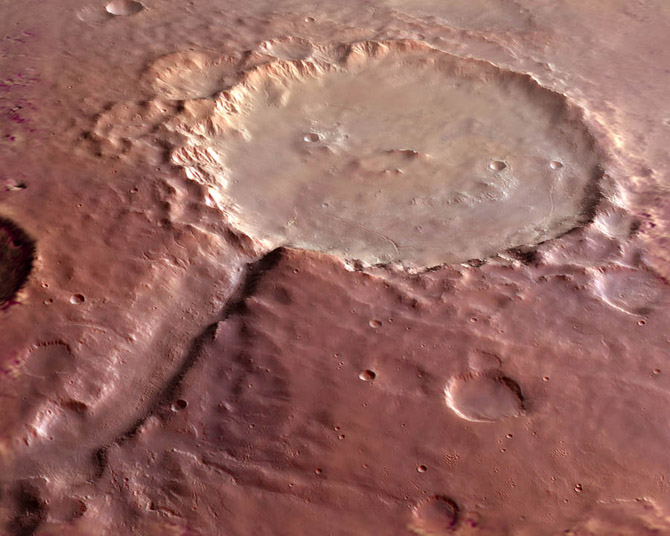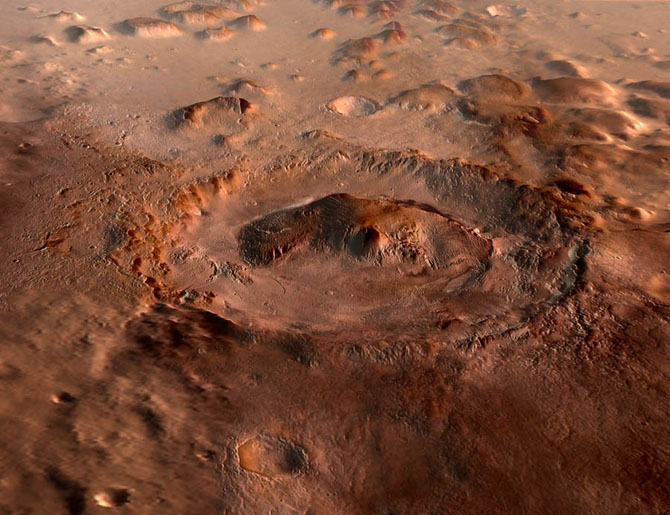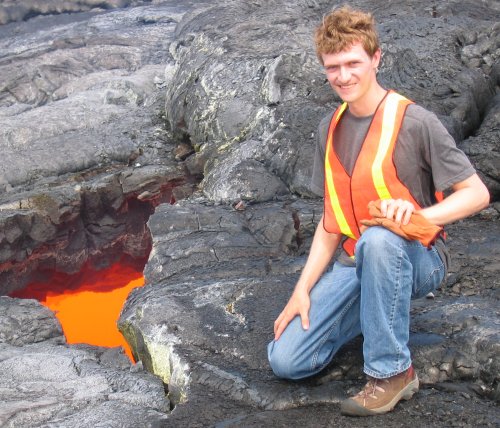E
EarthlingX
Guest
http://www.wired.com : Where Will Next Mars Rover Land? ( gallery )
...By Lisa Grossman
September 24, 2010
The next Mars rover is only about a year away from taking off, and it's already stretching its arms and spinning its wheels in a lab in California. But scientists are still debating exactly where to drop it.
Curiosity (or more formally, the Mars Science Laboratory) is slated to launch in late 2011, and its chief objective is looking for life. That means landing in a spot where the soils formed in water, and where rocks could have preserved chemical traces of living organisms.
Now, after four years of deliberation, the rover crew has narrowed the choice down to their four favorites: a rugged valley full of water-bearing clays; and three craters that may once have been basins, lakes or river deltas. Hundreds of planetary scientists will descend on Monrovia, California, next week to continue the debate.
...
Mawrth Vallis
One of the top contenders is Mawrth Vallis, one of the oldest valleys on Mars. Mawrth's appeal comes from its mineral composition: It's chock-full of clay-like minerals called phyllosilicates that form only in the presence of water.
...
Eberswalde Crater
Rover drivers are also tempted by Eberswalde Crater, just south of the Martian equator. Eberswalde is considered some of the best evidence on all of Mars that the planet had persistent water. Just to the left of the 40-mile-wide basin lies a wide, meandering delta.
...
Holden Crater
Just to the south of Eberswalde lies Holden Crater, another possible ancient lake that may have lived through a catastrophic flood.
...
Gale Crater
The final contender is Gale Crater, a hole 96 miles across with a mountain nearly 4 miles high stretching up from its center. Several gorges flow into the crater, but nothing flows out.
































